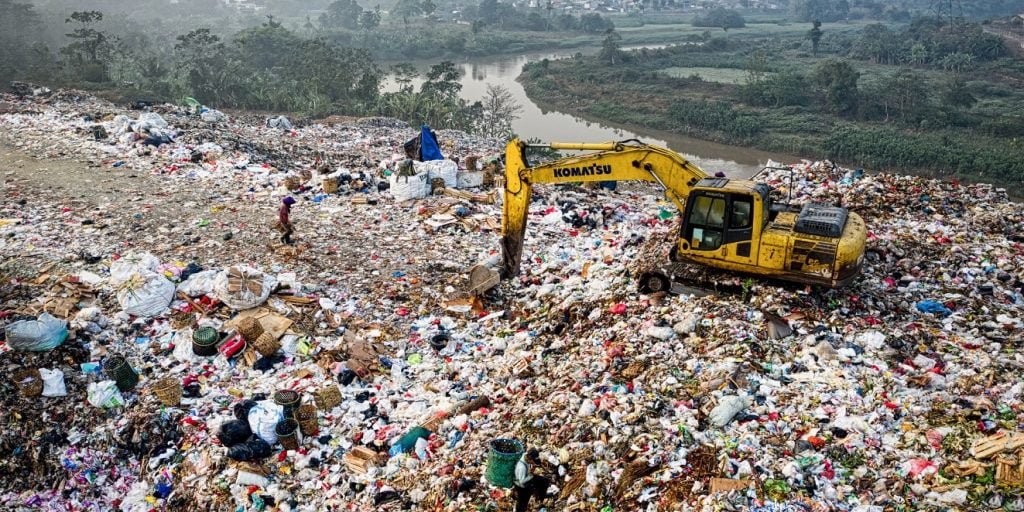The Smart Garden PRESS RELEASE: Are rising food prices and empty grocery shelves here to stay? If simplicity is a hallmark of reliability, then our total reliance on the incredibly complex global network that is our current industrial food system needs to be questioned.
By Terry S. Memory

The Need for The Smart Garden
Food Security is defined as being ‘the state of having reliable access to a sufficient quantity of affordable, nutritious food’. How should we view the global industrial food system’s ability to offer us ‘reliable’ food security in a post-Covid-19 future?
Currently, over 800 million people worldwide are considered food insecure, as recently detailed in the State of Food Security and Nutrition report from the FAO. So, for those 800 million people, the globalised industrial food system is already far from ‘reliable’.
Yet, if we looked back on the last eighty years and had to score the industrial food system for reliability, specifically for western countries, it would have to receive an A+.
From post world war two and up until Covid-19, the industrial food systems ability to meet the demand of wealthier nations has been nothing short of astonishing. However, it has been able to meet that demand at a significant cost. These costs include the cost to our public health, the cost of destroying our environment, and the cost of poorer and developing nations’ food security.
When Covid-19 emerged, we all faced the previously unconscionable reality of empty supermarkets and grocery shelves. The pandemic showed us that the industrial food system could no longer guarantee its reliability to consistently meet our ever-growing demand. This historical reliability gave way to a new reality that showed us that it could be broken and fail. We were all left to wonder what that meant for the reliability of our future food security.
There are many reasons why even the wealthiest nations encountered and still continue to face food shortages because of Covid-19. The foundation of reliability is resilience. Our current industrial food system finally showed that it lacked sufficient resilience against something like this significant external shock.
However, the industrial food system shortcomings had already been signalled to the world over a decade earlier.
Many people are unaware that in 2007 the world faced a food crisis, and this crisis was not initiated by some unforeseen event like a global pandemic. Its impact was felt in wealthier nations with rapidly inflating food prices. Still, many nations simply ran out of food for their populations.
Again, no single incident or issue sparked this crisis. To my mind, it perhaps represented a moment that could be termed ‘peak food’.
The global industrial food system is an incredibly complex set of almost infinite moving parts. The root cause of this food crisis is still being debated. Still, issues like continually falling commodity prices, a growing global population, production capacity issues, the rising cost and use of petroleum in agriculture for machinery and fertilizers, declining food stockpiles and the financial manipulation of commodity markets by hedge funds are all considered to have played a part.

While most developed countries only suffered a sharp rise in food prices, many poorer and developing nations faced large scale civil unrest and political instability. Their populations could not pay these higher prices, and they now faced a bleak future of increasing food insecurity, hunger, and starvation.
Perhaps coverage of the then-current global financial crisis kept much of this global food security crisis out of public consciousness and mainstream media. We will never know. However, it highlights that the ‘reliability’ aspect of our current industrial food system was already under question well before the advent of Covid-19.
Let us look at our current industrialised food system’s ability to reliably meet our expectations of sufficient quantity, affordability and nutrition now and into the future.
With the world’s growing global population, we need to produce more and more food every year. That means more food production from less arable farmland. The effects of arable farmland degradation from over-farming, chemical pollution, top-soil loss, and climate change are becoming more prevalent.
We are now seeing food prices inflating again, so at some point, the premiss of affordability will also come into question. Many politicians and governments now realise their futures are directly tied to their support of the growing public desire for greener policies. How long will it be before the devastating environmental realities of modern agricultural practices become a far hotter political issue?
Any impact to productivity by way of new environmentally conscious laws or mandates will reduce supply. Less supply with continually growing demand equates to higher prices. That is simple economics.
Dozens of countries worldwide are already on the margin of what is affordable food means to them. Your capacity to pay higher prices for food is directly associated with your personal income level. Our two or even three-tier global economic system sees those on tier two and tier three with income levels that are a fraction of tier one. These poorer and developing countries will be the first to be compromised by any policy change that impacts production output.
Food prices are the bellwether of economic reality. As we have seen many times with regional food shortages or economic catastrophes, food can become unaffordable for all of us at some point.
I will quickly address the often promoted green initiatives for agriculture like regenerative farming, organic farming and hi-tech food production etc. While all of these types of initiatives are critical and essential if we are to move to more environmentally considered agricultural practices, the reality is that they will take many years, if not decades, to successfully implement.
All of these initiatives at the moment cannot produce the same production output of our current system, with its dependence on large-scale machinery, chemical inputs and GMOs. How we manage these transitions will directly affect aspects like reliability and affordability. Already we pay more for organic food at our local food store because it simply costs more to produce for the farmer.
It is an interesting challenge to consider.
Suppose we let the industrial food system continue in its current form, with its trillions of dollars of annual cost to our personal health and environment. In that case, we will ultimately pay an unfathomable price in the future. Or, if we make the changes toward a healthier and greener industrial food system, we will be paying far higher prices for the produce and items than what we pay today.
Household expenditure on food, even in wealthier countries, still represents to second largest cost to households after rents and mortgages. I believe the prices we pay for food produced by the industrial food system in the future will rise exponentially, either way. So the future reliability of affordability has to be now questioned.
Lastly, let us consider what nutritious means in the context of the food we purchase and consume from our supermarkets. One of the most confronting aspects of the Covid-19 pandemic has been highlighting just how unhealthy the populations of most western developed countries actually are. After age, the number one comorbidity with Covid related deaths has been obesity. The food we eat has left many of us over-weight and with an array of diet-related chronic diseases like heart disease and diabetes.
We are too vitamin and minerals deficient to even enjoy something approximating a healthy immune system. As part of the current global epidemic of obesity is a concurrent epidemic of malnutrition. While there are obviously issues around the sheer volume of food we consume and our inactive lifestyles, it also highlights the nutritional reality of the food we are consuming?
Is our food produced by the industrial food system ‘reliably nutritious? Well, the rising cost of our public health systems would indicate that it isn’t.
We have enjoyed the perception of a reliable food system for almost a century. Events in the last decade and particularly in the last couple of years have shown that we need to question what reliable means in the context of our future food security. If we keep producing and consuming food the way we are, then mankind is on a very finite timeline to catastrophe.
If we make the changes we need, then store-bought food will become exponentially more expensive in the future as we transfer the cost now being paid by the environment and our health to our hip pocket.
Everyone has the right to ‘the reliable access to a sufficient quantity of affordable, nutritious food’, but responsibility comes with those rights.
How we personally embrace that responsibility will largely dictate what level of food reliability we enjoy in the changing reality of our future food security.

Written by: Terry S. Memory
Terry S. Memory is the author of ‘The Smart Garden – The Homegrown Future of Food Security’ that will be published by Pan Macmillian in 2022. Terry is a holistic health and sustainability advocate who lives on his organic and self-sufficient farm with his wife and six children on the island of Tasmania, Australia.
As an entrepreneur, he recently founded one of Australia’s most successful Hemp Food companies and developed a range of innovative and award-winning products. He has developed the Smart Garden concept and Technograrian approach to homegrown food security as a way of making it healthier, easier and more efficient to grow food at home.
More information can be found about the Smart Garden initiative at www.thesmartgardenbook.com
Copyright 2021. All rights reserved.

Reference list
Carducci, B., Keats, E.C., Ruel, M., Haddad, L., Osendarp, S.J.M. and Bhutta, Z.A. (2021). Food systems, diets and nutrition in the wake of COVID-19. Nature Food, 2(2), pp.68–70.
Earth, D. to (2016). Diet-Related Illnesses Cost U.S. Economy $1 Trillion Annually. [online] Down to Earth Organic and Natural. Available at: https://www.downtoearth.org/news/2016-09/9171/diet-related-illnesses-cost-us-economy-1-trillion-annually.
Environment Reports. (2015). Environment Reports. [online] Available at: http://www.environmentreports.com/how-does-agriculture-change/.
Fao.org. (2019). Organic Agriculture: Why is organic food more expensive than conventional food? [online] Available at: http://www.fao.org/organicag/oa-faq/oa-faq5/en/.
Gustafson, S. (2020). Global Report on Food Crises: 135 million in 55 countries faced acute hunger in 2019. [online] Ifpri.org. Available at: https://www.ifpri.org/blog/global-report-food-crises-135-million-55-countries-faced-acute-hunger-2019.
OECD (2020). Food supply chains and COVID-19: Impacts and policy lessons. [online] OECD. Available at: https://www.oecd.org/coronavirus/policy-responses/food-supply-chains-and-covid-19-impacts-and-policy-lessons-71b57aea/.
Probasco, J. (2019). Why Do Healthcare Costs Keep Rising? [online] Investopedia. Available at: https://www.investopedia.com/insurance/why-do-healthcare-costs-keep-rising/.
Soaring Cost of Food Is Forcing Families to Scrimp at the Dinner Table. (2021). Bloomberg.com. [online] 18 Aug. Available at: https://www.bloomberg.com/news/features/2021-08-18/soaring-cost-of-food-is-forcing-families-to-scrimp-at-the-dinner-table [Accessed 15 Sep. 2021].
The global food crises. (n.d.). [online] Available at: https://www.un.org/esa/socdev/rwss/docs/2011/chapter4.pdf.
The New Daily. (2021). Rising grocery prices to hit households amid inflation pressures. [online] Available at: https://thenewdaily.com.au/finance/finance-news/2021/09/09/grocery-prices-covid/ [Accessed 15 Sep. 2021].
UN: Cost of food rises at fastest pace in over a decade. (2021). BBC News. [online] 4 Jun. Available at: https://www.bbc.com/news/business-57353624.
www.fao.org. (n.d.). The State of Food Security and Nutrition in the World 2021 | FAO | Food and Agriculture Organization of the United Nations. [online] Available at: http://www.fao.org/publications/sofi/2021/en/.